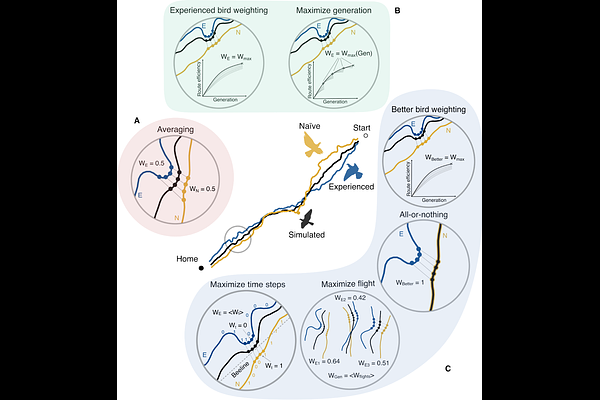A tale of two birds: cognitive simplicity drives collective route improvements in homing pigeons

A tale of two birds: cognitive simplicity drives collective route improvements in homing pigeons
Banerjee, S. C.; Francisco, F. A.; Kao, A. B.
AbstractCognitive abilities are central to how animals navigate complex environments. Beyond individual cognition, group living can also enhance navigation by pooling individually acquired information. One way this may be achieved is by following experienced leaders, which requires recognizing expertise within group members. Alternatively, accurate decisions could also emerge without expert opinions, through simpler mechanisms like the \'wisdom of crowds\' principle that average out individual biases. Consequently, collective navigation strategies range from cognitively complex to simple, and yet, the prevalence or interplay of different collective strategies in nature remains unexplored. In this study, we asked: what is the navigation mechanism(s), requiring minimal cognitive demands, that is necessary and sufficient to quantitatively replicate the experimental results of a 2017 study on homing pigeons (Columba livia), which showed that sequential chains of bird pairs flying home -- similar to a game of telephone -- led to shorter homing routes compared to control birds flying individually or in fixed pairs. Our results show that the experimental data aligns closely with the simplest strategy -- route averaging. Surprisingly, the complex mechanism of selectively propagating the best flight through social learning offered no additional advantage. We further observed that mixed strategies, although not supported by the experimental data, in theory combined advantages from both averaging and active selection of better routes, resulting in even greater performance. Hence, our results highlight the potential for future research to investigate selective pressures shaping the evolution of cultural learning and trade-offs among different decision mechanisms theoretically available to social animals in nature.